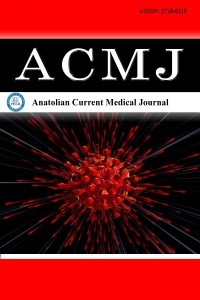1.
Magkas N, Tsioufis C, Thomopoulos C, et al. Orthostatic hypotension: from pathophysiology to clinical applications and therapeutic considerations. J Clin Hypertens (Greenwich). 2019;21(5):546-554. doi: 10.1111/jch.13521
2.
Zhang Q, Li J, Xie Y, Zhao J, Du J. Orthostatic hypertension in children and adolescents with postural tachycardia syndrome. J Trop Pediatr. 2014;60(6):461-466. doi:10.1093/tropej/fmu055
3.
Duan H, Zhou K, Hua Y. Clinical progress of orthostatic hypertension in children. Chin Med J (Engl). 2014;127(21):3825-3828. doi:10.3760/cma.j.issn.0366-6999.20132969
4.
Zhao J, Han Z, Zhang X, et al. A cross-sectional study on upright heart rate and BP changing characteristics: basic data for establishing diagnosis of postural orthostatic tachycardia syndrome and orthostatic hypertension. BMJ Open. 2015;5(6):e007356. doi:10.1136/bmjopen-2014-007356
5.
Flynn JT, Kaelber DC, Baker-Smith CM, et al. Clinical practice guideline for screening and management of high blood pressure in children and adolescents. Pediatrics. 2017;140(3):e20171904. doi:10.1542/peds.2017-1904
6.
Wang C, Li Y, Liao Y, et al. 2018 Chinese Pediatric Cardiology Society (CPCS) guideline for diagnosis and treatment of syncope in children and adolescents. Sci Bull (Beijing). 2018;63(23):1558-1564. doi:10.1016/j.scib.2018.09.019
7.
Misra M, Pacaud D, Petryk A, et al. Vitamin D deficiency in children and its management: review of current knowledge and recommendations. Pediatrics. 2008;122(2):398-417. doi:10.1542/peds.2007-1894
8.
Aksu T, Ünal Ş. Iron deficiency anemia in infancy, childhood, and adolescence. Turk Arch Pediatr. 2023;58(4):358-362. doi:10.5152/TurkArchPediatr.2023.23049
9.
Hu Y, Jin H, Du J. Orthostatic hypertension in children: an update. Front Pediatr. 2020;8:425. doi:10.3389/fped.2020.00425
10.
Hu Y, Wang Y, He B, et al. Sympathetic overactivation from supine to upright is associated with orthostatic hypertension in children and adolescents. Front Pediatr. 2020;8:54. doi: 10.3389/fped.2020.00054
11.
Khalaji A, Behnoush AH, Tajdini M. Association between vitamin D deficiency and vasovagal syncope: a systematic review and meta-analysis. Clin Cardiol. 2023;46(7):721-728. doi:10.1002/clc.24035
12.
Kovalchuk T, Boyarchuk O. Serum vitamin D levels in children and adolescents with vasovagal syncope, syncope due to orthostatic hypotension, and cardiac syncope. Turk Arch Pediatr. 2023;58(1):42-48. doi:10.5152/TurkArchPediatr.2022.22141
13.
Xiao Y, Wu J, Min L, Dong X. The correlation between serum 25-hydroxyvitamin D and parathyroid hormone levels and orthostatic intolerance in children. Progress Pediatr Cardiol. 2022;66:101550. doi:10. 1016/j.ppedcard.2022.101550
14.
Zhang Q, Sun Y, Zhang C, Qi J, Du J. Vitamin D deficiency and vasovagal syncope in children and adolescents. Front Pediatr. 2021;9:575923. doi: 10.3389/fped.2021.575923
15.
Oden Akman A, Tumer L, Hasanoglu A, Ilhan M, Caycı B. Frequency of vitamin D insufficiency in healthy children between 1 and 16 years of age in Turkey. Pediatr Int. 2011;53(6):968-973. doi:10.1111/j.1442-200X. 2011.03486.x
16.
Beitzke M, Pfister P, Fortin J, Skrabal F. Autonomic dysfunction and hemodynamics in vitamin B12 deficiency. Auton Neurosci. 2002;97(1): 45-54. doi:10.1016/s1566-0702(01)00393-9
17.
Gröber U, Kisters K, Schmidt J. Neuroenhancement with vitamin B12—underestimated neurological significance. Nutrients. 2013;5(12):5031-5045. doi:10.3390/nu5125031
18.
Aytemir K, Aksöyek S, Büyükasik Y, et al. Assessment of autonomic nervous system functions in patients with vitamin B12 deficiency by power spectral analysis of heart rate variability. Pacing Clin Electrophysiol. 2000;23(6):975-978. doi:10.1111/j.1540-8159.2000.tb00883.x
19.
Öner T, Guven B, Tavli V, Mese T, Yılmazer MM, Demirpence S. Postural orthostatic tachycardia syndrome (POTS) and vitamin B12 deficiency in adolescents. Pediatrics. 2014;133(1):e138-e142. doi:10.1542/peds.2012-3427
20.
Pektas A, Koken R, Koca HB. Serum vitamin B-12 in children presenting with vasovagal syncope. Asia Pac J Clin Nutr. 2018;27(1):176-181. doi:10.6133/apjcn.022017.17
21.
Zhao J, Yang JY, Jin HF, Du JB. Clinical analysis of orthostatic hypertension in children. Zhonghua Er Ke Za Zhi. 2012;50(11):839-842.
22.
Fedorowski A. Postural orthostatic tachycardia syndrome: clinical presentation, aetiology and management. J Intern Med. 2019;285(4):352-366. doi:10.1111/joim.12852
23.
Sebastian SA, Co EL, Panthangi V, et al. Postural orthostatic tachycardia syndrome (POTS): an update for clinical practice. Curr Probl Cardiol. 2022;47(12):101384. doi:10.1016/j.cpcardiol.2022.101384

